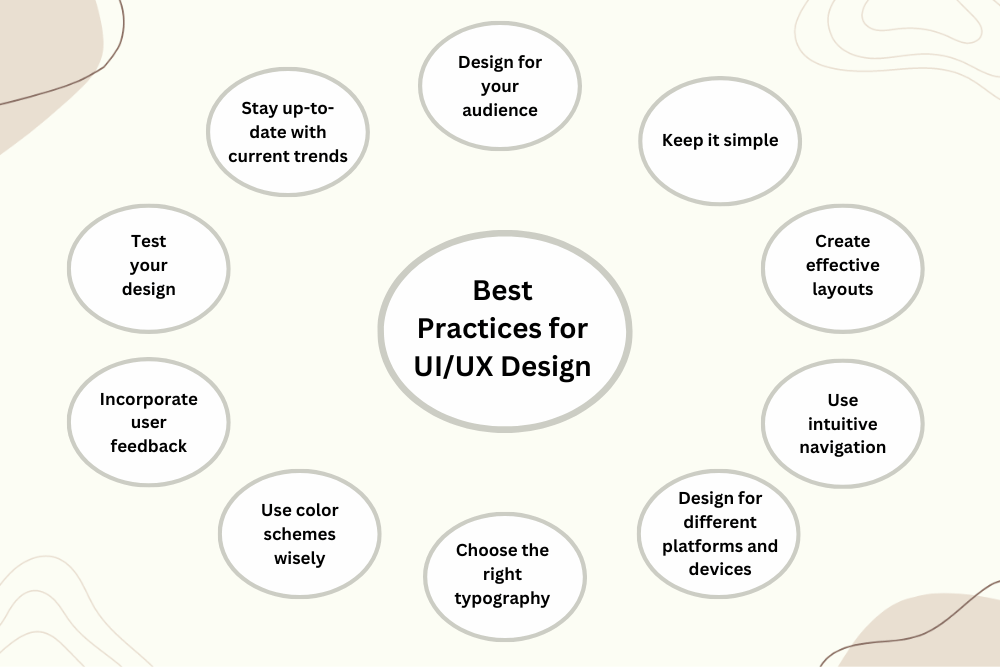
In today’s digital age, user interface (UI) and user experience (UX) design have become essential elements for any successful online business. If you’re wondering what UI/UX design is and why it matters, this article will give you an in-depth understanding of these two critical components.
Introduction
UI/UX design is about creating digital products that are easy to use, visually appealing, and meet the user’s needs. UI design focuses on the look and feel of the product, including the layout, colors, and typography. UX design focuses on the user’s interaction with the product, including ease of use, accessibility, and overall satisfaction.
UI/UX design makes the user experience smooth, intuitive, and enjoyable. This article will explain what UI/UX design is and why it matters for your online business.
What is UI/UX Design?
UI design concerns the visual appearance of a website, app, or any other digital platform. It is about designing a visually appealing layout that is easy to navigate and visually pleasing to the user. The goal of UI design is to create an attractive interface that is engaging and functional.
On the other hand, UX design focuses on the user’s interaction with the product, and it concerns the overall user experience, including ease of use, accessibility, and satisfaction. UX design aims to create a product that is easy to use, intuitive, and enjoyable for the user.
UI/UX design is the combination of these two elements. It is about creating a product that is visually appealing, easy to use, and provides an excellent user experience.
Why Does UI/UX Design Matter?
1. Better user experience
UI/UX design matters primarily because it ensures a better user experience. Users who interact with a website, app, or platform expect a seamless experience. If the design is clunky or confusing, users will quickly lose interest and move on to a competitor’s site. With UI/UX design, your website or app will be intuitive, easy to use, and visually appealing, ensuring users stay engaged with your product.
2. Increased engagement
A well-designed website or app can lead to increased engagement with your brand. A good UI/UX design can improve user retention rates, boost customer satisfaction, and encourage users to spend more time on your website or app. You can increase the chances of conversion and repeat business by improving engagement.
3. Better branding
UI/UX design is also critical for branding. The visual appearance of your website or app can impact how users perceive your brand. A professional and visually appealing design can create a positive perception of your brand and build brand recognition.
4. Competitive advantage
In today’s digital age, competition is fierce. A well-designed website or app can provide a competitive advantage by differentiating your brand from competitors. A visually appealing and easy-to-use website or app can attract users and keep them engaged with your brand, which can be a key differentiator from competitors.
Tips for Effective UI/UX Design
1. User research
The first step in effective UI/UX design is to conduct user research. This involves understanding the needs and preferences of your target audience. By understanding your users, you can create a design that meets their needs and provides a better user experience.
2. Consistency
Consistency is key in UI/UX design. A consistent design across all pages of your website or app is essential, including color schemes, typography, and layout. Consistency helps users navigate your website or app and improves the overall user experience.
3. Simplify Navigation
Navigation is a critical aspect of UI/UX design. It’s essential to make it easy for users to navigate your website or app. Use simple and clear language for menu items and buttons, and provide clear and easy-to-understand instructions for users to navigate the site.
4. Effective Use of Whitespace
Whitespace is the space between design elements and helps create a clean, uncluttered design. It’s essential to use whitespace effectively in UI/UX design. Whitespace helps improve readability, draw attention to essential design elements, and create a sense of balance.
5. Design for Accessibility
Accessibility is an essential consideration in UI/UX design. Design your website or app with accessibility in mind, ensuring it is easy for people with disabilities. For example, provide alternative text for images for visually impaired users, and use appropriate color contrast for users with color blindness.
The Importance of UI/UX Design in Modern Design and Technology
For several reasons, UI/UX design is essential to modern design and technology. First, it helps to create user-friendly and visually appealing products that meet the target audience’s needs. A well-designed UI/UX can significantly enhance the user’s experience with the product, making it easier to use, more engaging, and more enjoyable.
Good UI/UX design can also positively impact business outcomes. For example, it can increase user engagement, leading to higher retention rates and more frequent product use. It can also improve conversion rates by making it easier for users to complete tasks and achieve their goals. Additionally, a well-designed product can increase customer satisfaction, which can help build brand loyalty and drive positive word-of-mouth recommendations.
Furthermore, good UI/UX design can help to differentiate a product from its competitors. In today’s crowded marketplace, a product’s design can be crucial in attracting and retaining customers. A product with a better UI/UX design than its competitors can stand out, gain a competitive edge, and ultimately be more successful.
Finally, good UI/UX design can help to future-proof a product. By considering the needs of the target audience, including their evolving preferences and expectations, a product can be designed to be adaptable and flexible. This can ensure that it remains relevant and valuable over time, even as new technologies and trends emerge.
Best Practices for UI/UX Design
Here are some best practices for UI/UX design:

- Design for your audience: Design with your target audience in mind, including their needs, preferences, and technical capabilities.
- Keep it simple: Avoid cluttered designs and focus on simplicity. Use clear, concise language, simple, easy-to-use interfaces, and consistent design patterns.
- Create effective layouts:
- Use clear visual hierarchies.
- Organize content logically.
- Ensure that the most important information is prominent and easy to find.
- Use intuitive navigation: Make it easy for users to navigate your product by using clear and consistent navigation patterns.
- Design for different platforms and devices: Consider the various platforms and devices users will be accessing your product on and design for each accordingly. Ensure that your design is responsive and adapts to different screen sizes.
- Choose the right typography: Use legible typography that is appropriate for your audience and conveys the proper tone and style. Make sure that your typography is consistent throughout your design.
- Use color schemes wisely: Choose color schemes that are appropriate for your audience and the tone of your product. Ensure that your color scheme is consistent and supports your overall design goals.
- Incorporate user feedback: Gather user feedback throughout the design process and use it to improve the product. This helps ensure that the final product meets the target audience’s needs.
- Test your design: Conduct usability testing to identify any issues with your design and make necessary improvements. This helps ensure that your product is easy to use and meets the needs of your target audience.
- Stay up-to-date with current trends: Keep up-to-date with the latest UI/UX design trends, including new technologies, design patterns, and user behaviors. This can help ensure your design remains relevant and engaging for your target audience.
By following these best practices, you can create effective UI/UX designs that meet the needs of your target audience, are easy to use, and drive positive business outcomes.
The Future of UI/UX Design
The future of UI/UX design is exciting and full of potential as technology continues to evolve, and new trends emerge. Here are some of the emerging trends that are likely to shape the future of UI/UX design:
1. Virtual and Augmented Reality:
The use of virtual and augmented reality is becoming increasingly common in UI/UX design, as these technologies allow for more immersive and interactive experiences. This trend will likely continue as more industries adopt these technologies to enhance their products and services.
2. Voice and Gesture-Based Interfaces:
Voice and gesture-based interfaces are becoming more common in UI/UX design as they allow for more natural and intuitive interactions with technology. As voice recognition and gesture-based technology continue to improve, we will likely see more products incorporate these interfaces.
3. Integration of AI and Machine Learning:
The integration of AI and machine learning into the design process is likely to become more common, as these technologies can help designers make more informed decisions and create more personalized experiences for users. For example, AI can analyze user behavior and preferences and make design recommendations based on that data.
4. Increased Focus on Accessibility:
As more people rely on technology to access information and services, there is a growing focus on accessibility in UI/UX design. Designers are becoming more aware of the importance of creating products that are accessible to people with disabilities and are incorporating accessibility features into their designs.
5. Personalization:
Personalization is becoming increasingly crucial in UI/UX design, as users expect products and services tailored to their needs and preferences. Designers incorporate personalization features into their designs, such as personalized recommendations and customized interfaces.
6. Integration of Physical and Digital Experiences:
The integration of physical and digital experiences is becoming more common in UI/UX design as products and services are designed to seamlessly blend the physical and digital worlds. For example, smart home devices can be controlled through a mobile app, and wearable technology can be used to track and monitor physical activity.
Conclusion
In conclusion, UI/UX design is critical to creating effective and engaging digital products. By understanding its importance and implementing best practices, designers and developers can create products that meet the needs of their target audience and drive business success. Whether you are a designer, developer, or business owner, investing in UI/UX design can significantly impact the success of your digital products.

